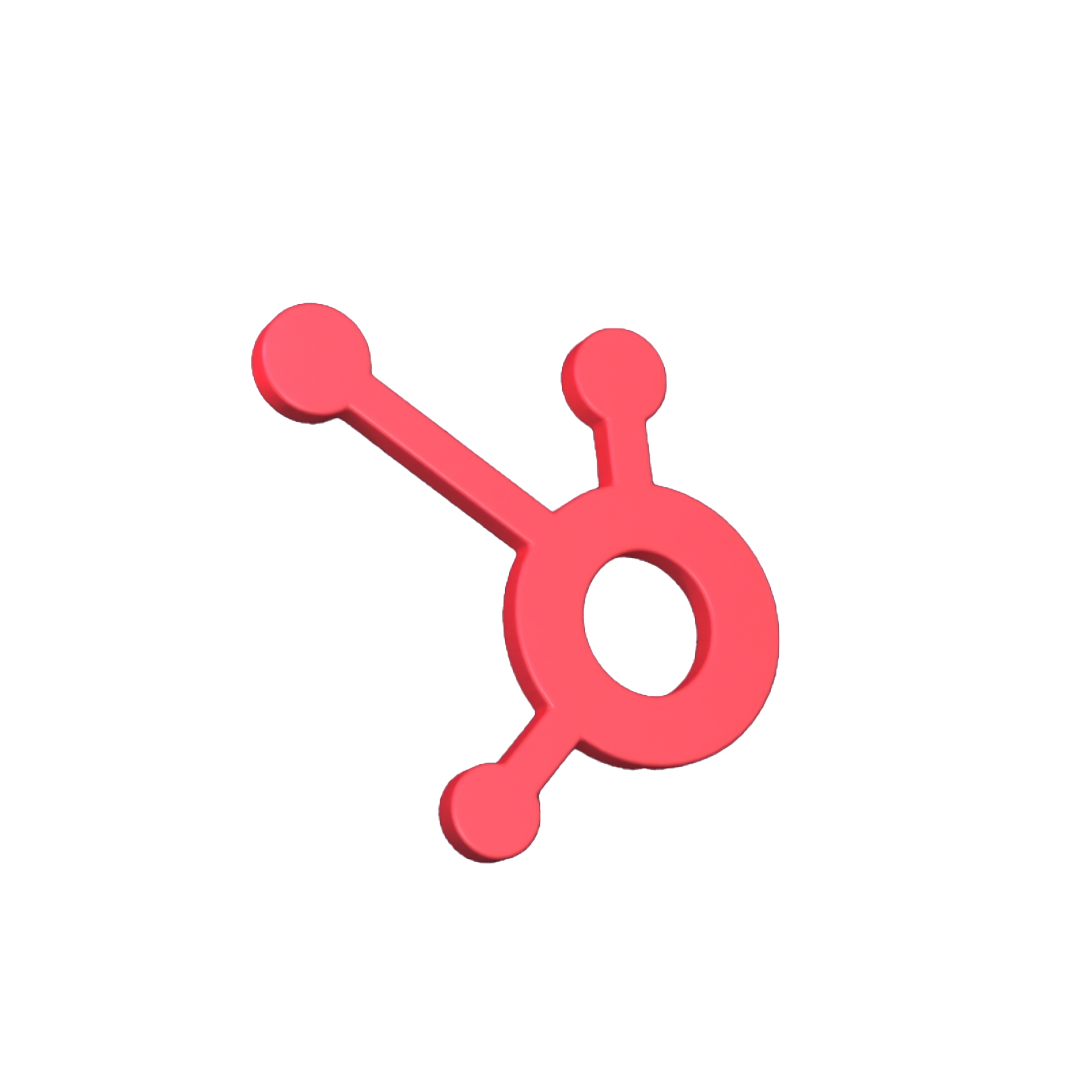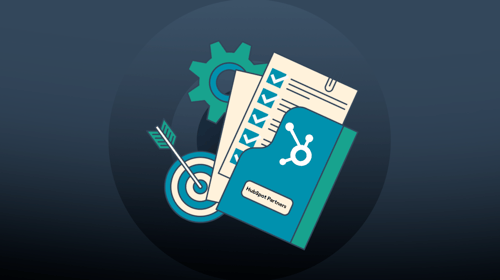This article explores what HubSpot solution architecture involves, the role of a Solutions Architect, and how around-the-clock support helps ensure the system stays reliable, aligned, and effective.
Solution architecture is the foundation of any effective system. It's not just about connecting tools—it's about building the structure that keeps operations running smoothly across teams, departments, and regions.
In global organisations, managing multiple systems, maintaining consistent data, and aligning global teams can quickly become a challenge. Without a clear, well-designed architecture, the risk of inefficiencies, duplication, and misalignment grows.
When HubSpot is used as a central part of business operations, solution architecture becomes essential. It ensures the platform is tailored to the way the business actually works—supporting processes, governance, and data integrity at every level.
What is HubSpot solution architecture?
HubSpot solution architecture is the strategic framework that governs how HubSpot is designed, implemented, and managed within an organisation. It ensures that the system aligns with business needs, supports efficient data flow, and integrates with existing processes.
Just as a well-constructed building maximises space, light, and functionality, a well-architected HubSpot solution ensures that data flows seamlessly, teams can collaborate effectively, and business insights are accessible. When HubSpot is used across multiple departments, regions, or business units, the system architecture becomes critical in maintaining consistency and scalability.
Key elements of a strong HubSpot solution architecture include:
- CRM infrastructure and data model: A well-designed data model organises and stores information in a way that allows teams to access accurate, actionable insights—whether they're in marketing, sales, or customer service.
- Interconnection of hubs: HubSpot’s marketing, sales, and service hubs must work together as one unified system. A strong solution architecture ensures these hubs collaborate, with insights flowing freely between them to create a consistent and informed customer experience.
- Custom objects and data schemas: Every business has unique needs. Custom objects and data schemas allow the system to evolve alongside the business, ensuring that HubSpot adapts to changing requirements without disruption.
A carefully crafted architecture not only helps manage operations effectively but also positions the business to make better decisions, respond faster, and maintain alignment as it evolves.
The impact of CRM architecture on business performance
A well-designed HubSpot solution design has a significant impact on various aspects of business performance. For large organisations, this is especially critical, as the stakes are high when it comes to efficiency, data integrity, and maintaining consistency across regions and teams.
Here’s how it influences business operations:
- Efficiency: Streamlining processes means teams spend less time managing systems and more time engaging with customers. A well-architected system reduces bottlenecks, enabling faster decision-making and more productive use of resources. For global teams, this ensures that workflows are seamless, no matter the time zone or region.
- Data-driven Insights: HubSpot’s interconnected hubs provide a unified view of customer data, giving teams a comprehensive understanding of customer needs. This allows businesses to make informed, strategic decisions based on real-time insights, leading to improved customer relationships and more effective campaigns.
- Scalability: As your business operates across multiple markets or departments, the amount of data and number of interactions grow exponentially. A strong CRM architecture ensures the system can scale without compromising performance, keeping data flow and business operations stable even as volumes increase.
- Adaptability: With the right architecture in place, organisations can quickly adapt to market changes, new business needs, or emerging technologies. A well-structured HubSpot environment can easily integrate with new tools and processes, giving businesses the agility they need to stay competitive.
- Governance and compliance: For large businesses, governance is a key concern. HubSpot’s architecture can be tailored to include proper data security protocols and compliance measures, ensuring the system meets internal policies and regulatory standards.
Ultimately, a solid CRM architecture is the foundation that enables consistent performance, strong customer relationships, and sustained operational efficiency.
Structuring HubSpot Solution Architecture for long-term success
For businesses with complex operations, aligning HubSpot with broader strategic and operational goals is essential. Rather than adopting a specific enterprise architecture framework, the focus should be on structured discovery, consistent documentation, and unifying business and technology needs through practical, scalable methods.
A structured approach to HubSpot solution architecture offers several key benefits:
- Alignment between business and technology: By taking a discovery-led approach, involving key stakeholders from marketing, sales, service, and IT, teams can surface goals, pain points, and system requirements early. This ensures that the HubSpot architecture reflects real business priorities rather than just technical assumptions.
- Clarity through standardised documentation: Clear, consistent documentation of processes, system integrations, and user requirements allows all stakeholders to stay aligned. Using industry-recognised notations like BPMN (Business Process Model and Notation) helps bridge the gap between business and technical teams, creating shared understanding and reducing ambiguity in decision-making.
- Strategic planning and future-proofing: A well-structured solution architecture ensures that HubSpot evolves in lockstep with your business. Whether you're scaling globally, managing custom integrations, or optimising user journeys, having a clear architectural foundation enables smoother planning and more agile execution.
- Risk reduction and operational resilience: With a documented, transparent design process, potential risks and technical gaps can be identified earlier. This reduces the likelihood of costly disruptions and creates a more robust, resilient system.
- Sustainability and scalability: Instead of quick fixes or siloed solutions, this approach builds a scalable HubSpot ecosystem that can grow with your organisation. By incorporating best practices from both business and technology perspectives, you ensure HubSpot remains a long-term strategic asset.
By leaning into structured discovery, clear documentation, and well-established notations like BPMN, your HubSpot solution architecture becomes more than just technically sound — it becomes a shared blueprint for growth, innovation, and alignment across your entire organisation.
Exploring the HubSpot System Architecture
To build a high-performing HubSpot ecosystem across multiple teams, regions, or functions, it’s essential to understand how the underlying architecture is structured. HubSpot offers a flexible CRM platform — but getting it to work the right way for a complex organisation requires intentional design, integration, and ongoing oversight.
A solutions partner with architectural expertise plays a critical role in shaping how your system operates day-to-day. Below are some of the key architectural elements that need to be aligned for HubSpot to function as a reliable engine within your business.
1. Unified CRM Infrastructure and Data Model
At the heart of HubSpot is a shared CRM infrastructure that houses all customer, company, and deal data. But how this data is modelled — how it’s structured, segmented, and surfaced — makes all the difference. A custom-designed data model helps ensure data is not only accurate and consistent, but also actionable across teams.
Getting this right typically requires tailored schema design and careful planning, especially when aligning with business units, regions, or existing tools.
2. Interconnection of Marketing, Sales, and Service Hubs
HubSpot’s ecosystem spans marketing, sales, and service – but these don’t automatically work in harmony. An effective architecture establishes how these hubs communicate, what data they share, and how handoffs happen between teams.
This ensures, for example, that marketing insights directly inform sales conversations, and that the customer context is retained as service teams come into play. Done well, this kind of alignment reduces friction and supports more consistent customer experiences across the business.
3. Custom Objects and Data Schemas
Out-of-the-box properties rarely cover the full complexity of an enterprise’s processes. That’s where custom objects and schemas come in — enabling you to model your CRM around the specific structures, services, or lifecycles that matter to your business.
Used strategically, they ensure HubSpot reflects the realities of your operations — not the other way around. But building and maintaining these layers requires a high level of precision and control, particularly when data integrity and reporting are on the line.
With the right architectural oversight, HubSpot can serve as a central system of record that supports scalable, collaborative operations. That kind of outcome doesn’t happen by default. It’s the result of thoughtful planning, hands-on expertise, and ongoing optimisation from a partner who understands both the platform and your business context.
The role of HubSpot solutions architect
Implementing HubSpot in a large-scale or multi-function organisation isn’t a one-and-done project. It’s an ongoing process that requires strategic oversight, controlled change, and continuous optimisation. This is where the role of a HubSpot Solutions Architect becomes essential.
A Solutions Architect isn’t just focused on technical setup — they ensure the system is aligned to the realities of your operations and governed in a way that supports stability and long-term value.
Below are some of the core responsibilities and areas of impact.
- System design & alignment: Solutions Architects work closely with stakeholders to understand your business structure, use cases, and challenges. Using that input, they design a HubSpot architecture that supports those goals, aligning hubs, defining custom objects, and configuring data models that reflect your business, not just generic CRM logic. Their role is to create a system that not only works — but works for your organisation.
- Integration & data flow: HubSpot rarely exists in isolation. A Solutions Architect is responsible for ensuring data flow between internal systems and HubSpot — integrating tools, resolving conflicts, and eliminating silos. They define how data moves across the business, where it originates, and how it's used, ensuring a clean, reliable source of truth.
- Change control & governance: In environments where stability matters, change needs to be managed carefully. A Solutions Architect oversees governance across your HubSpot environment, applying structured change control to new workflows, schema updates, or integration rollouts. This reduces risk, prevents disruption, and maintains system integrity as business needs evolve.
- Optimisation & scale: HubSpot must adapt over time as processes shift, markets change, or teams grow. Solutions Architects lead ongoing refinement of your setup, identifying inefficiencies, surfacing insights, and optimising performance across users and business units. Their work ensures that the system stays responsive, relevant, and scalable.
- Problem solving & technical leadership: When issues arise, the Solutions Architect is the first line of defence. They investigate, resolve, and prevent system issues, whether technical, structural, or strategic. Their deep understanding of the architecture allows them to troubleshoot effectively and ensure reliable performance across the business.
Ultimately, a HubSpot Solutions Architect acts as the strategic bridge between business goals and CRM execution. Their expertise helps transform HubSpot into a robust, adaptable platform that supports operational clarity, customer insight, and enterprise-wide alignment.
Benefits of 24/7 HubSpot solution architecture Support
A well-architected HubSpot environment is just the beginning. To ensure it runs reliably at scale, across regions and teams, consistent architectural oversight is essential — especially when uptime, accuracy, and continuity matter.
This is where round-the-clock support becomes a critical safeguard. It provides the operational resilience and proactive system management many businesses need to keep their CRM ecosystem aligned, responsive, and fully functional.
- Always-on expertise: Operational challenges don’t work to a schedule. A sync issue, integration error, or broken workflow can occur at any time. Around-the-clock access to experienced HubSpot architects means that issues can be resolved quickly, without waiting for business hours or relying on internal capacity. For organisations running across time zones, this ensures global continuity and uninterrupted system performance.
- Proactive monitoring and maintenance: Keeping HubSpot optimised isn’t just about fixing problems. It’s about spotting them early, or preventing them entirely. 24/7 support provides continuous monitoring of your system architecture, allowing architects to intervene before issues become disruptions. Whether it’s a misaligned data structure, failed automation, or creeping performance issue, early intervention reduces risk and preserves system integrity.
- Reliable data flow across systems: When multiple tools and departments rely on HubSpot as the source of truth, the consistency and flow of data becomes non-negotiable. Continuous architecture support ensures data stays clean, synced, and reliable, both within HubSpot and across integrated systems. This level of oversight reduces friction across marketing, sales, and service operations and enables confident, data-informed decisions at every level.
- Reduced downtime, faster recovery: When disruptions do occur, speed matters. With 24/7 architecture support in place, resolution doesn’t have to wait. Issues are triaged and addressed in real time, reducing downtime and keeping operations on track, without straining internal resources or disrupting team workflows.
In enterprise-level environments, CRM reliability can’t be left to chance. 24/7 architectural support provides the stability, responsiveness, and technical depth required to keep your HubSpot system running at its best, no matter the complexity.
Why you need HubSpot solution architecture support
Running a complex CRM ecosystem like HubSpot across multiple teams, systems, and geographies demands more than just an initial setup. It requires an architecture that’s continuously aligned with how the business operates — and evolves.
Here are some common scenarios where ongoing architecture support becomes critical:
- Managing complex integrations and configurations: As systems multiply and teams expand, maintaining clean integrations and scalable configurations becomes a challenge. Architecture support ensures HubSpot remains the central, connected source of truth — without breaking under complexity.
- Aligning CRM architecture with business strategy: The architecture behind your CRM should reflect how your business operates, not just technically, but strategically. Solutions Architects bring structure and clarity to that alignment, ensuring that HubSpot is configured to support key business goals, not work against them.
- Meeting standards, regulations, and best practices: From security policies to compliance frameworks, architectural decisions can have far-reaching implications. Expert oversight ensures your environment adheres to industry standards and regulatory requirements, especially important when handling customer data at scale.
- Designing for stability and flexibility: When operations are mature and high-volume, your CRM system needs to remain stable but still flexible enough to adapt. Architecture support helps maintain this balance, making sure your HubSpot environment can evolve without risking performance or breaking existing processes.
- Supporting sales and service performance: Your CRM is the foundation of customer engagement and architectural decisions directly impact how sales, marketing, and service teams deliver. With expert support, processes can be continuously refined, ensuring that HubSpot empowers your teams instead of slowing them down.
- Preventing technical debt: Over time, even well-configured systems can become cluttered. Architecture support helps avoid the slow build-up of technical debt, spotting inefficiencies, duplications, and risks before they cause problems.
In short, solution architecture support ensures HubSpot remains operationally sound, strategically aligned, and ready to meet the demands of the business, without the cost of reactive fixes or workarounds.
Huble's 24/7 HubSpot solution architecture & change control
For businesses that rely on HubSpot to run daily operations, the architecture behind the platform is a business-critical foundation. But keeping that foundation stable, secure, and adaptable doesn’t happen by accident. It takes deep platform knowledge, hands-on expertise, and structured governance.
As a certified HubSpot Solutions Partner, our role is to work alongside your business — not to just implement, but to support and evolve your CRM environment in line with your operational reality.
Our architecture support includes:
- Ongoing design and refinement of your HubSpot setup, ensuring it stays aligned with how your business functions.
- Change control management to govern updates, mitigate risks, and maintain system stability.
- Documentation and version tracking so architectural decisions are clearly recorded, shareable, and auditable.
- Data model optimisation, covering everything from standard objects to custom schemas that reflect your specific business logic.
Integration advisory and implementation, helping you manage HubSpot’s place within your wider tech stack.
All delivered with flexible 24/7 access to a dedicated architecture team — because when operations span time zones and functions, downtime is not an option.
The strategic value of HubSpot solutions architecture support
Whether you’re onboarding a new system, replatforming global teams, or maintaining complex multi-hub setups, your CRM architecture needs constant attention, not just during projects, but every day.
With Huble as your solution architecture partner, you gain more than just technical help. You get a team that understands the intersection of HubSpot and enterprise operations — and works proactively to keep your platform sharp, stable, and scalable.
This isn’t just about making HubSpot work. It’s about making HubSpot work for how your business runs.
Contact our team today so we can talk about how we can support your architecture, governance, and operational goals — today and long-term.











-3.png?width=500&height=320&name=Matt%20-%20imagery%20bank%20(8)-3.png)

